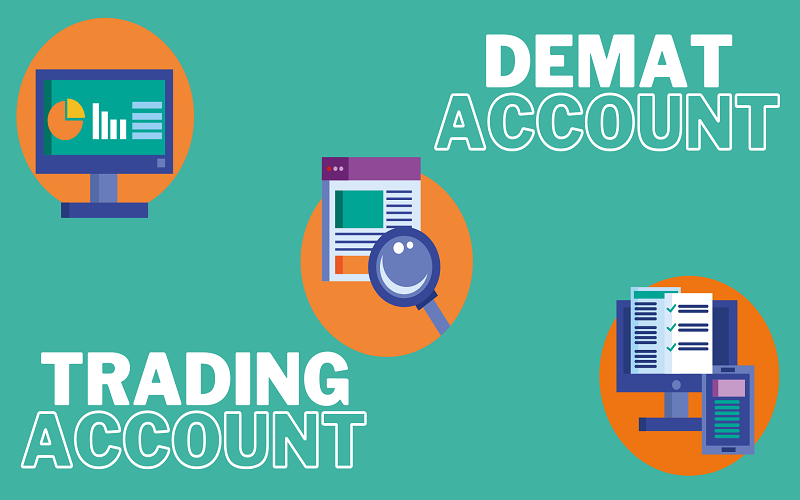Prices of assets and trade activity are significantly impacted by interest rates. Interest rate fluctuations affect various markets’ projected returns, borrowing costs, and investment flows. We will examine how interest rates impact important trading markets with zero brokerage demat account including bonds, equities, commodities, and currencies in this blog.
Treasury Yields and Bond Prices
Interest rates are measured against Treasury yields, hence changes in yields have an effect on bond market prices. The connection between bond yields and prices is usually inverse. For instance, the yields on Treasury notes and bonds often increase simultaneously when the Federal Reserve boosts short-term rates. Bond prices that are already in place decline as a result. When choosing to purchase or sell Treasury securities, traders take interest rate fluctuations into consideration.
Extended-term Treasury rates have an impact on borrowing prices in the bond markets as well. An increase in 30-year Treasury rates will result in increased borrowing costs for corporate bonds and fixed-rate mortgages. Bond investors should think about the interest rate forecast and incorporate it into their trading strategy when it comes to duration and yield curve positioning. Inaccurate rate predictions may result in losses.
The Impact on Equities
Earnings and equity prices are also impacted by interest rates. Companies may acquire funding more affordably and fund their expansion ambitions thanks to lower rates. On the other hand, when interest rates rise, borrowing becomes more expensive and eventually lowers company profitability. Setting price objectives for companies and predicting earnings both need consideration of this dynamic.
Furthermore, interest rates have an effect on the general desire for stocks. When compared to bonds, stocks often have lower interest rates. Money is pushed into the equity markets as a result, supporting values with a tailwind. On the other hand, fixed income becomes more attractive in rising rate settings. The main stock market indices might face challenges as a result of this trend.
The Influence on Commodities Trading
Commodity markets are also impacted by changes in interest rates. Global building and manufacturing activity forecasts have an effect on the pricing of important industrial metals such as copper and aluminum. The projections for economic growth might be dampened and industrial metal prices can be adversely affected by rate increases by policymakers. Rising rates do, however, also contribute to the dollar’s appreciation. This provides some compensation by lowering the price of dollar-denominated goods for international purchasers, such as gold and crude oil. To determine the overall effect on commodities, traders must keep a careful eye on changes in policy.
Currencies and Relative Interest Rates
There is a strong correlation between interest rates and currency valuations. Currencies with higher relative yields tend to attract greater capital inflows and strengthen over time compared to low-yielding counterparts. This dynamic drives “carry trades” – where traders borrow in low-yield currencies to fund positions in higher-yielding currencies. When the yield differential between currencies narrows, these carry trades are unwound. This creates volatility and shifts in exchange rates across currency pairs.
Understanding Central Bank Policy
Central bank policy shifts around benchmark interest rates and asset purchase programs are among the most important drivers of trading markets. Unexpected rate hikes or asset purchase tapering can lead to surges in bond yields and volatility across asset classes. Dovish policy pivots on the other hand support equity and commodity market upside. That is why central bank communication and forward guidance is closely scrutinized by traders for clues on policy changes. Staying on top of monetary policy trends is crucial.
Corporate Debt Markets
Changes in government bond yields serve as a benchmark for borrowing costs in corporate debt markets. Rising Treasury yields increase the cost of new bond issuances and financing activity for companies. This can impact earnings. At the same time, existing corporate bonds with lower coupon rates become less attractive. This dynamic causes prices on outstanding corporate paper to fall as yields across fixed income markets reprice higher to match higher risk-free government bond yields.
Mortgages and Housing
Mortgage rates track 10-year Treasury yields quite closely in many major economies. This means Fed rate hikes and rising long-term government bond yields feed through to higher mortgage rates quite rapidly. As the cost of financing increases, it can dampen the appetite for refinancing activity and new mortgages. This weighs on momentum in local housing markets over time. The outlook for interest rate policy needs to be accounted for in any trades connected to housing or real estate.
Impacts Across Asset Classes
While interest rates have varying impacts across asset classes, there are some overarching trends that apply more broadly. Rising rates create headwinds for existing bond holders. There is also evidence that loftier rates can negatively impact earnings growth forecasts and equity valuations longer-term. However, markets tend to respond most violently to shifts that are unexpected or more aggressive in pace. This emphasizes the importance of monitoring the policy landscape and staying nimble as an investor or trader when rate cycle turns become apparent.
Adapting Trading Strategies
It is critical to include interest rate assumptions in trading strategies for all asset classes. Are swifter rate increases priced in, or may they catch markets off guard? What effects on currency dynamics will policy changes have? Which industries function better in circumstances with increasing or dropping rates? When creating positions that take interest rate implications into consideration, it is important to ask questions of this nature. The greatest way for traders to make money regardless of the general rate environment is to be flexible and modify methods ahead of market fluctuations.
Conclusion
Different asset classes are affected by interest rates differently, which presents traders with both possibilities and threats with best platform for investing. Rising rates have the most immediate impact on bond markets, but they can eventually restrain equities prices as well. Meanwhile, changes in monetary policy and yield curves have a big impact on currencies, commodities, and financial instruments like mortgages. Success in trading requires an understanding of the basic link between interest rates and asset prices. Flexibility is crucial when it comes to changing policy positions and rate cycles. Traders offer themselves the best opportunity of navigating a variety of market circumstances by regularly assessing the effects of changing rates and adjusting their strategy accordingly.

